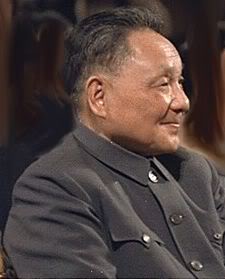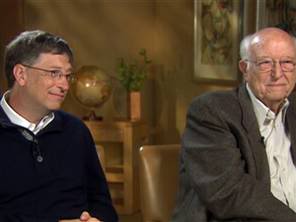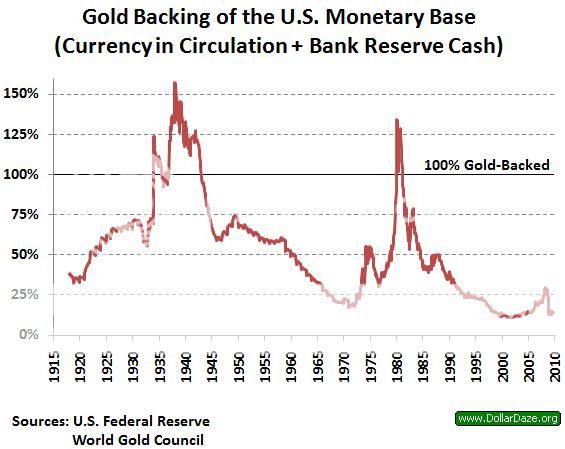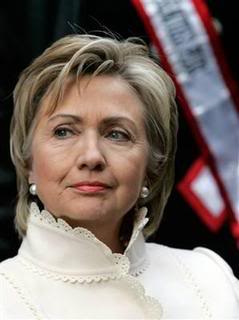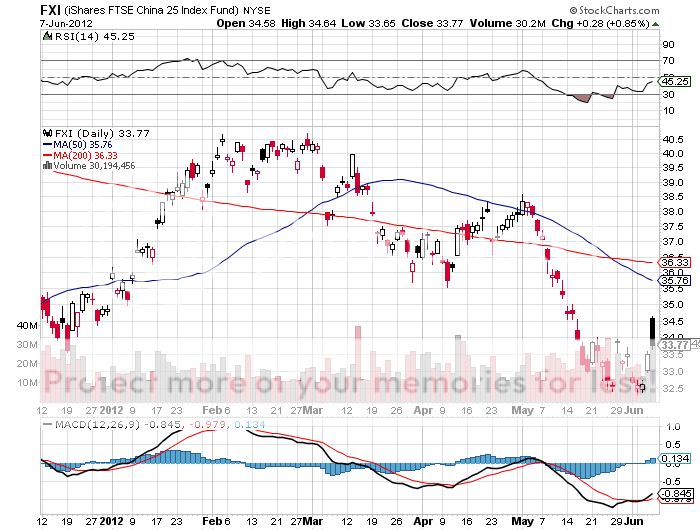?To get rich is glorious!? said Deng Xiaoping, the Chinese general who launched the country?s modern economy in the seventies.
I spent a sad and depressing, but highly instructional evening with Dr. Stephen Greenspan, who lost most of his personal fortune with Bernie Madoff. The University of Connecticut psychology professor poured the bulk of his savings into Sandra Mansky?s Tremont feeder fund; receiving convincing trade confirms and rock solid custody statements from the Bank of New York.
This is a particularly bitter pill for Dr. Greenspan to take, because he is an internationally known authority on Ponzi schemes, and published a book entitled Annals of Gullibility-Why We Get Duped and How to Avoid It. It is a veritable history of scams, starting with Eve?s subterfuge to get Adam to eat the apple, to the Trojan horse and the Pied Piper, up to more modern day cons in religion, politics, science, medicine, and yes, personal investments.
Madoff?s genius was that the returns he fabricated were small, averaging only 11% a year, making them more believable. In the 1920?s, the original Ponzi promised his Boston area Italian immigrant customers a 50% return every 45 days. My suspicious grandmother wisely passed on an invitation to join the plan.
Madoff also feigned exclusivity, often turning potential investors down, leading them to become even more desirous of joining his club. For a deeper look into Greenspan?s fascinating, but expensively learned observations and analysis, go to his website at www.stephen-greenspan.com .
Since I am an avid collector of investment scam stories, I?ve got to update you on what?s been coming out of Switzerland. Two Japanese nationals were caught smuggling $134 billion in US Treasury bonds from Switzerland to Italy in a false bottom suitcase. No, that is not a typo, that is ?b? for billion. The two were mysteriously let go the next day.
The blogosphere is exploding with conspiracy theories about the paper, which is almost certainly fake. Are there now so many T bonds out there that $139 billion of bogus ones can easily disappear into the mix? Personally, I see North Korea?s and the Japanese yakuza?s fingerprints all over this. Fake bonds can?t be traded, but I can think of any number of banks in Switzerland that would unwittingly accept them as collateral. But collateral for what?
Why do I expect George Clooney and Brad Pitt to pop up on this one. (Ed note: please see gratuitous attempt to include George Clooney?s photo in a financial newsletter for the female readers).
I had a chat with Bill Gates, Sr. last night, co-chairman of the Bill and Melinda Gates Foundation, the world?s largest private philanthropic organization. There, a staff of 800 help him manage $30 billion.
The foundation will give away $3.1 billion this year, a 10% increase over last year. Some $1.5 billion will go to emerging nation health care, and another $750 million to enhance American education. The foundation?s spending in Africa has been so massive, that it is starting to have a major impact on conditions, and is part of the bull case for investing there (please click here).
The fund happens to be one of the best managed institutions out there, having sold the bulk of its Microsoft (MSFT) stock just before the dotcom bust and moving the money into Treasuries. Mr. Gates? pet peeve is the precarious state of the US K-12 public education system, where teaching is not as good as it could be, expectations are low, and financial incentives and national standards are needed.
When asked about retirement, he says ?having a son with a billion dollars puts a whole new spin on things.?? Now a razor sharp 87, his favorite treat is the free Net Jet miles he gets from his son Bill every year. In his memoir Showing up for Life, he says a major influence was his Scoutmaster of 70 years ago. Being an Eagle Scout myself, I quickly drilled him on some complex knots, and he whipped right through all of them. The world needs more Bill Gates Srs.
?At some point in 2012, knuckles are going to be turning white, and we?ll see whatever rabbits Ben Bernanke is going to have to pull out of his hat?, said David Rosenberg of Gluskin, Sheff in Associates
After my regular dump on residential real estate, I feel obliged to reveal one corner of this beleaguered market that might actually make sense.
By 2050 the population of California will soar from 37 million to 50 million, and that of the US from 300 million to 400 million, according to data released by the US Census Bureau and the CIA fact Book (check out the population pyramid below).
That means enormous demand for the low end of the housing market?apartments in multi-family dwellings. Many of our new citizens will be cash short immigrants. They will be joined by generational demand for limited rental housing by 65 million Gen Xer?s and 85 million Millennials enduring a lower standard of living than their parents and grandparents. These people aren?t going to be living in cardboard boxes under freeway overpasses. Or maybe they will.
The trend towards apartments also fits neatly with the downsizing needs of 80 million retiring Baby Boomers. As they age, boomers are moving from an average home size of 2,500 sq. ft. down to 1,000 sq. ft. condos and eventually 100 sq. ft. rooms in assisted living facilities. The cumulative shrinkage in demand for housing amounts to about 4 billion sq. ft. a year, the equivalent of a city the size of San Francisco.
Fannie and Freddie financing is still abundantly available at the lowest interest rates on record. Institutions combing the landscape for low volatility cash flows and limited risk are starting to pour money in.
Got Anything With 3 Beds & 2 Baths and a Hot Tub?
I am constantly barraged with emails from gold bugs who passionately argue that their beloved metal is trading at a tiny fraction of its true value, and that the barbaric relic is really worth $5,000, $10,000, or even $50,000 an ounce (GLD). They claim the move in the yellow metal we saw in recent years is only the beginning of a 30 fold rise in prices similar to what occurred from 1972 to 1979, when it leapt from $32 to $950.
So when the chart below popped up in my in-box showing the gold backing of the US monetary base, I felt obligated to pass it on to you to illustrate one of the intellectual arguments these people are using. To match the 1936 monetary value peak, when the base was collapsing, and the double top in 1979 when gold futures first tickled $950, this precious metal has to increase in value by eight times, or to $9,600 an ounce.
I am long term bullish on gold, other precious metals, and virtually all commodities for that matter. But I am not that bullish. It makes my own three year $2,300 prediction positively wimp-like by comparison. The seven year spike up in prices we saw in the seventies, which found me in a very long line in Johannesburg, South Africa to unload my own krugerands in 1979, was triggered by a number of one off events that will never be repeated.
Some 40 years of pent up demand was unleashed when Richard Nixon took the US off the gold standard and decriminalized private ownership in 1972. Inflation then peaked around 20%. Newly enriched sellers of oil had a strong historical affinity with gold. South Africa, the world?s largest gold producer, was then a boycotted international pariah and teetering on the edge of disaster. We are nowhere near the same geopolitical neighborhood today, and hence my more subdued forecast. But then again, I could be wrong.
You may have noticed that I have not been doing much trading in gold or the other precious metals lately. That is because they are still working off an extremely overbought condition. Given some time, and a nice little dip in prices, and I?ll be back there in a heartbeat. You?ll be the first to know when that happens.
When Secretary of State Hillary Rodham Clinton passed through San Francisco last week I jumped at the chance to get an up to date overview on American foreign policy. The former first lady was making a brief San Francisco stop on her way to meet leaders on an extended Asian tour.
She showed up wearing one of her trademark charcoal pantsuits and a subdued gold necklace, her blonde hair with tinges of grey having grown out from previous years. She was clearly at ease, and far more relaxed than when I had seen her in Washington, having once lived here and counting legions of friends. An extended vacation from the daily hand to hand combat of American politics must also be at work.
Hillary is fundamentally restructuring America?s conduct of its foreign policy through the implementation of a quadrennial review, similar to efforts already in place at the Defense Department. While pulling together the many competing and diverse strands of thought at Foggy Bottom and countless other government agencies is nice in theory, it is devilishly difficult to implement in practice.
Afghanistan is front and center on her plate these days, as her recent visits to Kabul? testify. The US is executing a two pronged military/diplomatic strategy of stepped up bombing, while enticing the Taliban to the negotiating table. The code words are ?reintegration? and ?reconciliation?.
The first is intended to bring young Taliban fighters back to civilian life, who were often forcibly conscripted. The second seeks to bring their leadership to our side and to cut links with Al Qaida. The US has also tripled civilian aid workers in country to propel the development of a stable economy. For the last three decades the Taliban were offering the best paying jobs in town because they were the only jobs.
In Pakistan, from where the Taliban now launches most of its operations, the military is the strongest and most stable institution in the country. Recent floods have made the infrastructure needs of the country even more pressing. But before the US helps this volatile Moslem country, it must help itself first, through the raising of taxes. At 9% of GDP, Pakistan has the world?s lowest taxation burden, with many of the wealthy elite paying less than $100 a year.
Iran is a difficult nut to crack, as there are disputes raging within the country on which direction to take. Hillary?s State Department is pushing for a common negotiating forum with Europe to bring Iraq to the table on the nuclear issue, which will hopefully yield results.
The administration may push the passage of the START treaty with Russia on nuclear weapons control in the Senate, which has so far received bipartisan support. The US is supporting Russia?s application to enter the World Trade Organization because of its assistance in stopping weapons flows into Afghanistan and its anti-terrorism efforts.
The US supports China?s peaceful rise, but the picture is complex. China has certainly earned points through buying our debt and imposing sanctions on North Korea and Iran. It failed to move forward during the Copenhagen climate negotiations, but then went home and initiated enormous alternative energy projects on its own. The revaluation of the Yuan, relations with Taiwan, human rights, and the status of the Dalai Lama stand out there as potentially contentious issues.
Relations with Mexico are a top priority. The US is helping the beleaguered country in its brutal war against drug lords, which are now fielding paramilitary forces adopting terrorist tactics. Car bombings have become a regular occurrence. The US is partly responsible for Mexico?s plight with its endless demand for illegal drugs and a steady supply of weapons South of the border. We are bolstering law enforcement efforts, and helping raise a conviction rate in drug cases of only 2%, partly because so many witnesses disappear.
Hillary has launched a complete reorganization of US foreign aid efforts, which are currently scattered around 24 different government organizations whose management don?t know or contact each other. This will be rebuilt around the USAID organization originally established by president Kennedy, so the expenditure of hard fought tax dollars can become more efficient (click here for their site at http://www.usaid.gov/about_usaid/ ). The US lost its way in foreign aid during the seventies, was hollowed out by successive conservative administrations, and degenerated into wasteful subcontracting to non-governmental organizations.
There are few places I can go to get a complete, well researched, well thought out, truly global view. Hillary Clinton is certainly one of them.
?If there were no way to short stocks, the probability of stock market bubbles would be much greater,? said hedge fund manager, Bill Ackman, of Pershing Square.
The call was scratchy and barely audible. I was instructed to not mention any names. I should only use the prearranged code words when talking about political parties. You never know when the phones in China are tapped. I was just about to get a heads up that the People?s Bank of China was going to lower interest rates for the first time in four years.
Of course, we knew this was coming. Three relaxations of bank reserve requirements over the past six months telegraphed that the Middle Kingdom?s economy was slowing and that some serious monetary easing was on the way. But it appears that the things were now starting to get out of hand, possibly taking the GDP growth rate below the government?s 7% target.
Chinese companies were canceling contracts to buy imported commodities left and right, including for corn, sugar, copper, and iron ore, causing much distress among foreign counterparties. Now we learn that there are two dozen ships sitting off the Chinese coast fully loaded with coal, with no takers. The Chinese are walking away from contracted deliveries and refusing to pay, much as they did at the height of the 2008 financial crisis.
The really fascinating point that my friends in Beijing were trying to hammer home is that the current round of weakness is setting up the buying opportunity of the century. China is in the midst of changing government for the first time in a decade. The new president, Xi Jinping, is expected to take power in March, 2013, and will owe a broad range of constituents favors for his successful ascent. To solidify his position he will engineer a broad rise in the country?s standard of living that will benefit everyone in the country.
The first order of business will be to clean house and install loyal cadres across the upper tiers of the bureaucracy. Then he will launch a massive stimulus package designed to accelerate the growth of the domestic economy and wean the country off of its dependence on low waged export industries. The goal will be to move the Middle Kingdom?s economy inland, away from the coast where it is now concentrated.
That will enfranchise more of the 400 million of the rural population who have yet to participate in the modern economy and enjoy its benefits. The ultimate goal will be to raise Chinese per capita incomes from the current $3,000 to the $10,000-$20,000 range. A spin off advantage of this policy will be that it improves relations with the US, which until now has been drowning in Chinese exports in many politically sensitive industries. The economy will boom.
To finance this effort, the government will embark on a large scale privatization of state owned assets. Targeted is the government?s ownership of wide swaths of the banking, insurance, railroad, telecommunication, and energy industries. The effort will mirror the privatization policy that Margaret Thatcher imposed on the United Kingdom from the early 1980?s and the one the Japanese initiated a few years later. I participated in both, and the trading profits I took in were more than generous.
The funds that the Mandarins in Beijing will raise from this campaign will be used to pay off its enormous domestic debts. It will also be spent on repairing China?s badly tattered social safety net, with huge expenditures earmarked for health care and social security.
Stock markets will enjoy a major bull market for a decade, both in China (FXI), surrounding Asian emerging nations, like South Korea (EWY), Taiwan (EWT), Thailand (TF), Indonesia (IDX) and in Australia (EWA). Their currencies will rocket too, including The Australia (FXA), Singapore, Hong Kong, and Taiwanese dollars, as well as the Korean won.
The industry plays here won?t be the big infrastructure ones that worked so well in the last bull market, but instead will be focused on the country?s nascent consumer sector. I obviously need to do more work in this area, and when I get specific names, I will let you know.
Investments made near the current lows should see tenfold to twentyfold returns in coming years. This will also pave the way for full convertibility of the renminbi which could lead to the same sort of 300%-400% appreciation that we saw with the Japanese yen from the 1970?s to the 1990?s. That will create a double leveraged, hockey stick effect on the profits on Chinese investments.
What all of this does is to keep the Chinese economy growing at a 6%-8% rate for the indefinite future. While this is a slower rate than seen in years past, it will be off a much larger base, so the impact on the global economy will be substantial. China now boasts the world?s second largest economy, with GDP at $5.5 trillion, still well behind the US at $14.5 trillion.
Needless to say, basic commodities, like copper (CU), coal (KOL), iron ore (BHP), (RIO), all the food plays (CORN), (WEAT), (SOYB), (POT), (MOS), soar in this scenario. Gold (GLD), silver (SLV), platinum (PPLT), and palladium (PALL) also do extremely well. This could be the base case for taking the yellow metal up to my long term target of $2,300 an ounce, or even to the gold bug levels of $5,000 to $10,000.
So when does my friend expect the greatest bull market of all time to begin? After the new government comes in next March you should allow six months for it to get settled and get its ducks lined up. That takes us out to October, 2013. Until then the stock market will continue to bump along the bottom, as we have seen for the past year. Of course, if the markets get a whiff of what?s coming, they could react much sooner. You can take the China crash scenario and throw it in the trash.
I asked my contact if the demographic wall that I expect China to hit in five years will cool his expectations. This will happen with the population pyramid inverts as a result of its 32 year old one-child policy, and a large aging population supported by a smaller generation of young workers creates a large economic drag. He said that demographic effects won?t really impact the financial market for ten years, and could well be what brings the next bull market to an end.
Buy the Next Low
Legal Disclaimer
There is a very high degree of risk involved in trading. Past results are not indicative of future returns. MadHedgeFundTrader.com and all individuals affiliated with this site assume no responsibilities for your trading and investment results. The indicators, strategies, columns, articles and all other features are for educational purposes only and should not be construed as investment advice. Information for futures trading observations are obtained from sources believed to be reliable, but we do not warrant its completeness or accuracy, or warrant any results from the use of the information. Your use of the trading observations is entirely at your own risk and it is your sole responsibility to evaluate the accuracy, completeness and usefulness of the information. You must assess the risk of any trade with your broker and make your own independent decisions regarding any securities mentioned herein. Affiliates of MadHedgeFundTrader.com may have a position or effect transactions in the securities described herein (or options thereon) and/or otherwise employ trading strategies that may be consistent or inconsistent with the provided strategies.

